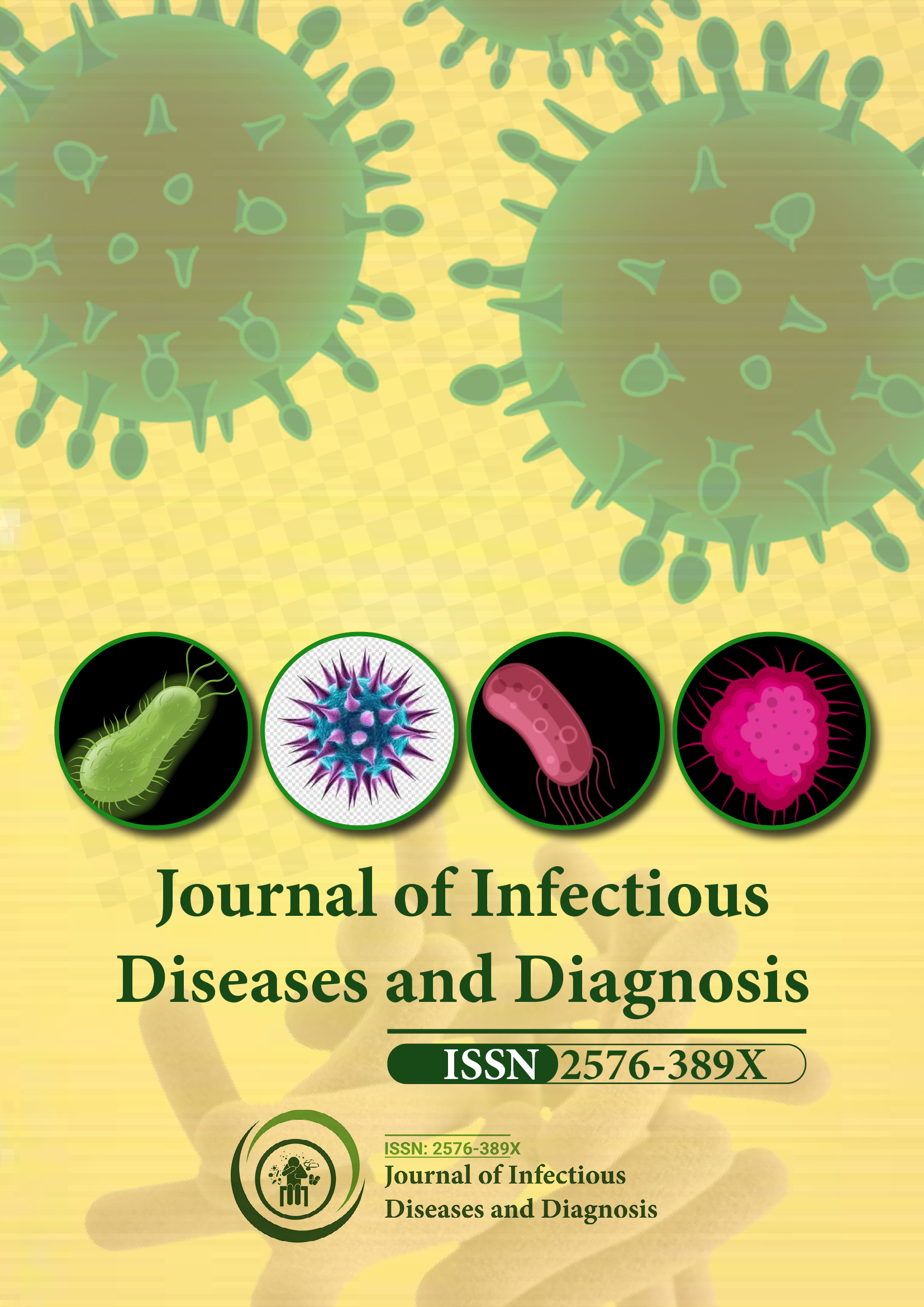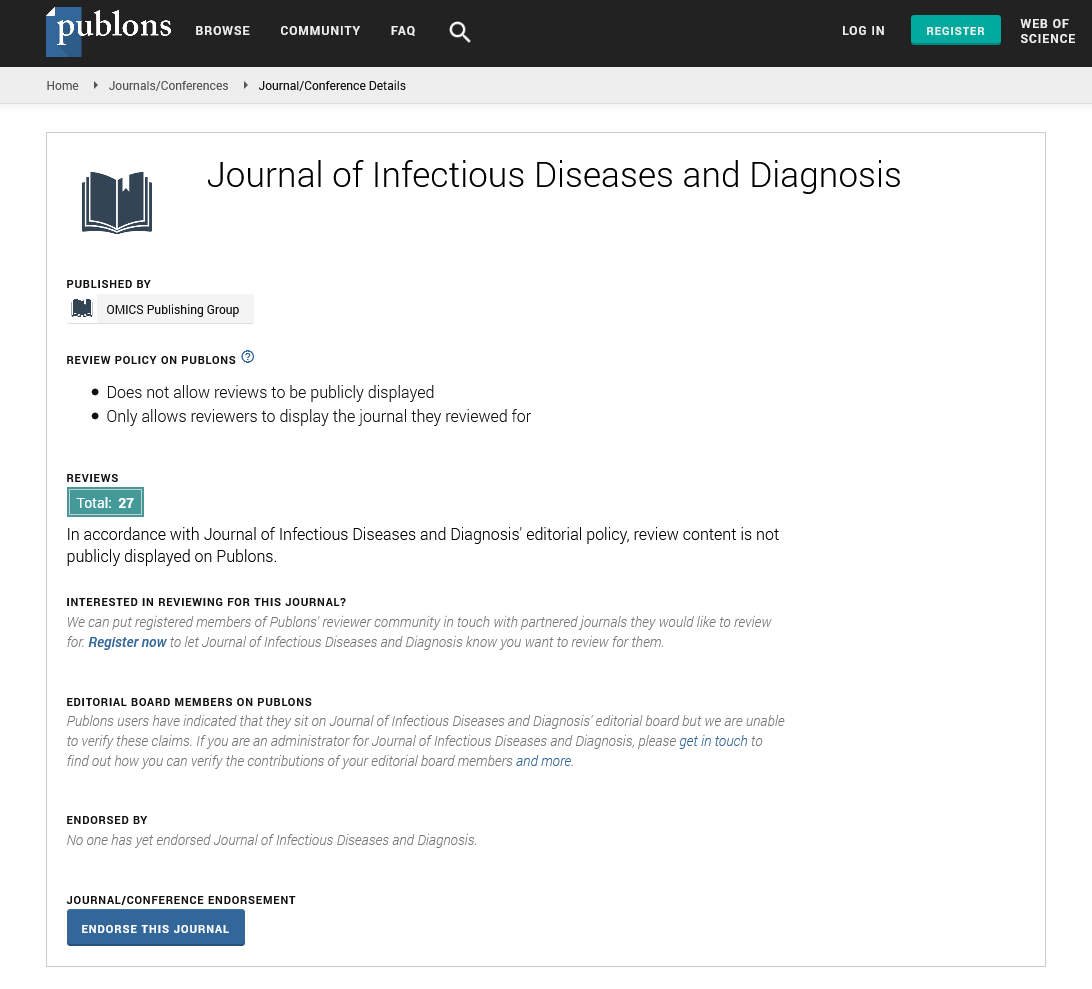Indexed In
- RefSeek
- Hamdard University
- EBSCO A-Z
- Publons
- Euro Pub
- Google Scholar
Useful Links
Share This Page
Journal Flyer

Open Access Journals
- Agri and Aquaculture
- Biochemistry
- Bioinformatics & Systems Biology
- Business & Management
- Chemistry
- Clinical Sciences
- Engineering
- Food & Nutrition
- General Science
- Genetics & Molecular Biology
- Immunology & Microbiology
- Medical Sciences
- Neuroscience & Psychology
- Nursing & Health Care
- Pharmaceutical Sciences
Commentary - (2024) Volume 9, Issue 6
Innovations in Influenza Diagnosis: Enhancing Accuracy in Clinical Practice
David Shannon*Received: 28-Oct-2024, Manuscript No. JIDD-24-27710; Editor assigned: 30-Oct-2024, Pre QC No. JIDD-24-27710 (PQ); Reviewed: 14-Nov-2024, QC No. JIDD-24-27710; Revised: 21-Nov-2024, Manuscript No. JIDD-24-27710 (R); Published: 29-Nov-2024, DOI: 10.35248/2576-389X.24.09.302
Description
Influenza, caused by the influenza virus, remains a significant public health challenge worldwide due to its high transmissibility and potential for severe complications. Accurate and timely diagnosis is fundamental to managing and controlling its spread. Influenza is an acute respiratory illness caused by influenza A and B viruses, which belong to the Orthomyxoviridae family. Seasonal outbreaks occur annually, contributing to substantial morbidity and mortality globally. While most cases resolve without intervention, complications such as pneumonia, exacerbation of chronic conditions and secondary bacterial infections can occur, particularly in high-risk groups.
The rapid evolution of the influenza virus through antigenic drift and shift poses challenges for public health systems. These genetic changes can lead to the emergence of novel strains, potentially causing pandemics. Effective management depends on early diagnosis and the initiation of antiviral therapies, making accurate diagnostic tools essential.
Pathogenesis and transmission
Influenza viruses infect the respiratory epithelium, initiating a local and systemic inflammatory response. Transmission occurs primarily through respiratory droplets generated by coughing, sneezing, or talking. Indirect transmission via contaminated surfaces also plays a role. The incubation period is generally 1-4 days and individuals can transmit the virus before symptom onset.
Symptoms of influenza range from mild to severe and include fever, cough, sore throat, muscle aches, fatigue and headache. Gastrointestinal symptoms, such as nausea and vomiting, are more common in children. Complications can arise in individuals with weakened immune systems, pregnant women, older adults and those with chronic illnesses.
Diagnostic methods
Timely diagnosis of influenza facilitates appropriate treatment and infection control measures. Diagnostic approaches include:
Clinical diagnosis: During influenza season, diagnosis is often based on clinical symptoms and epidemiological context. However, symptoms overlap with other respiratory infections, limiting the accuracy of clinical assessment alone.
Laboratory testing: Laboratory-based methods provide confirmation and help distinguish influenza from other respiratory pathogens.
Rapid Influenza Diagnostic Tests (RIDTs): RIDTs detect viral antigens in respiratory specimens within 10-15 minutes. These tests are widely used due to their speed and ease of use. However, sensitivity varies and false negatives are common, particularly in populations with low viral loads. Positive results are more reliable during periods of high influenza activity.
Molecular assays: Reverse Transcription Polymerase Chain Reaction (RT-PCR) is the gold standard for diagnosing influenza. This method detects viral RNA with high sensitivity and specificity, even at low viral loads. RT-PCR can also subtype influenza viruses, aiding in surveillance and outbreak response. Despite its accuracy, RT-PCR requires specialized equipment and trained personnel, limiting its availability in resource-constrained settings.
Viral culture: Viral culture involves growing the influenza virus from clinical specimens. While this method provides definitive results and allows for further characterization of the virus, it is time-intensive, requiring several days to yield results. It is primarily used for research and public health surveillance rather than routine clinical diagnosis.
Immunofluorescence assays: Direct and indirect immuno- fluorescence assays detect influenza antigens in respiratory specimens. These methods offer moderate sensitivity and specificity but require skilled technicians and specialized equipment.
Emerging diagnostic tools
Advancements in diagnostic technology have led to the development of point-of-care molecular tests that combine the accuracy of molecular assays with the convenience of rapid tests. These tools have the potential to improve influenza diagnosis in various healthcare settings.
Challenges in diagnosis
Despite the availability of diverse diagnostic methods, several challenges persist. False negatives in RIDTs can delay treatment and control measures, particularly in patients with atypical symptoms or low viral loads. Limited access to advanced diagnostic tools, especially in resource-limited regions, hinders effective disease management.
Moreover, co-infections with other respiratory pathogens can complicate the interpretation of diagnostic results. Surveillance data is essential to guide clinical decisions, particularly during periods of concurrent circulation of influenza and other respiratory viruses like SARS-CoV-2.
Clinical implications of accurate diagnosis
Timely and precise identification of influenza impacts patient care and public health. Antiviral medications, such as oseltamivir and zanamivir, are most effective when administered within 48 hours of symptom onset. Accurate diagnosis also reduces unnecessary antibiotic use, mitigating the risk of antimicrobial resistance.
On a broader scale, diagnostic data supports public health efforts to track influenza activity, detect outbreaks and inform vaccination strategies. During pandemics, early identification of novel strains aids in the rapid implementation of containment measures and vaccine development.
Conclusion
Influenza remains a significant global health challenge due to its high transmissibility, potential for complications and the continual emergence of new strains. Diagnostic tools play a vital role in managing the disease by enabling early treatment, reducing complications and supporting public health initiatives.
The integration of advanced molecular technologies into routine care holds the potential to improve the detection and management of influenza. Efforts to enhance access to diagnostic tools in underserved regions are essential for reducing the global burden of influenza and protecting vulnerable populations. Continued research and surveillance are necessary to stay ahead of this evolving pathogen.
Citation: Shannon D (2024). Innovations in Influenza Diagnosis: Enhancing Accuracy in Clinical Practice. J Infect Dis Diagn. 9:302.
Copyright: © 2024 Shannon D. This is an open-access article distributed under the terms of the Creative Commons Attribution License, which permits unrestricted use, distribution and reproduction in any medium, provided the original author and source are credited.

